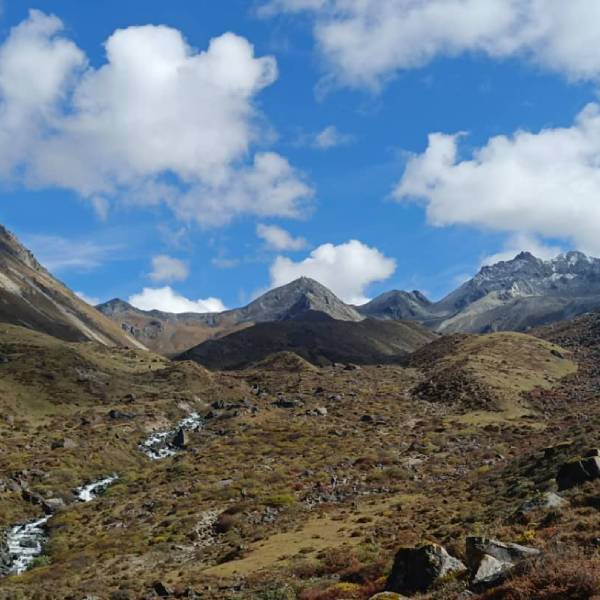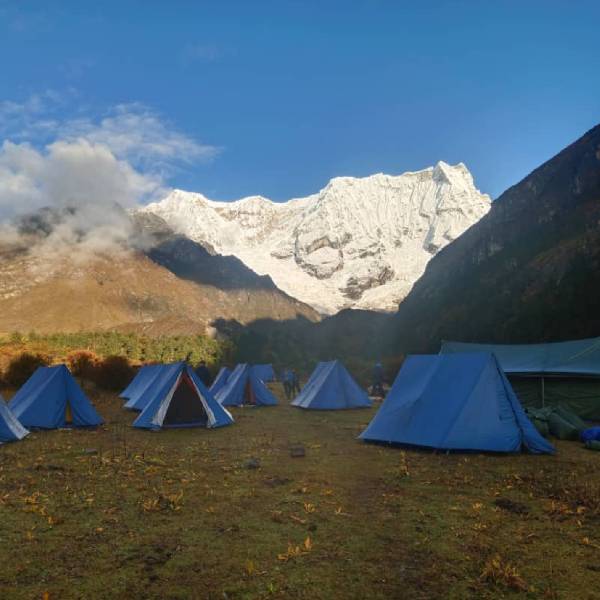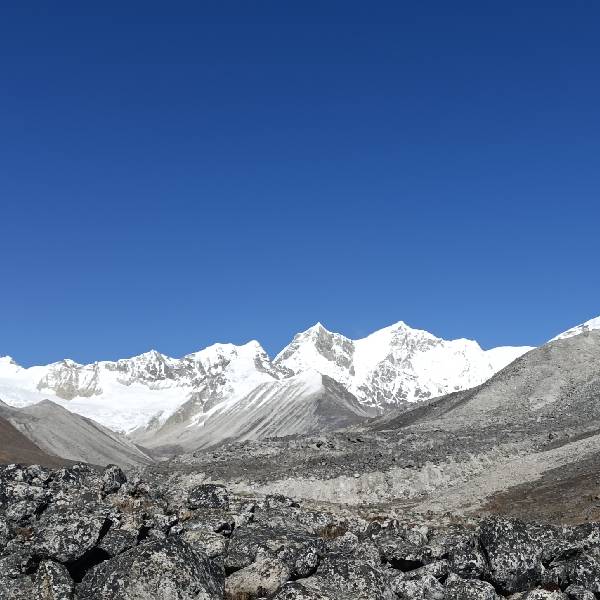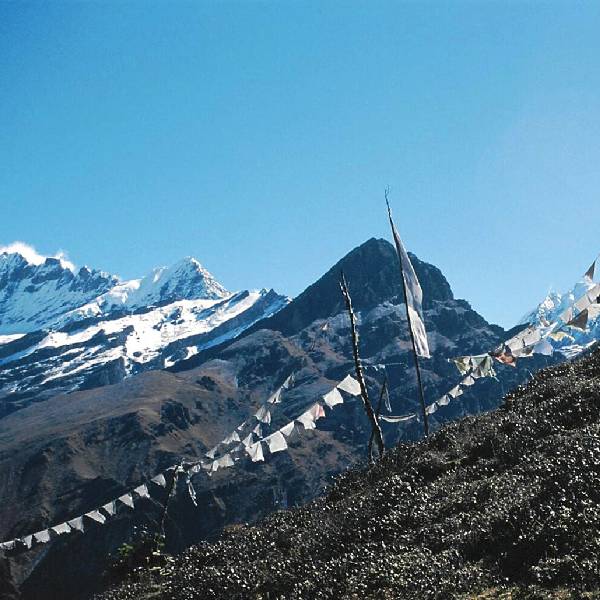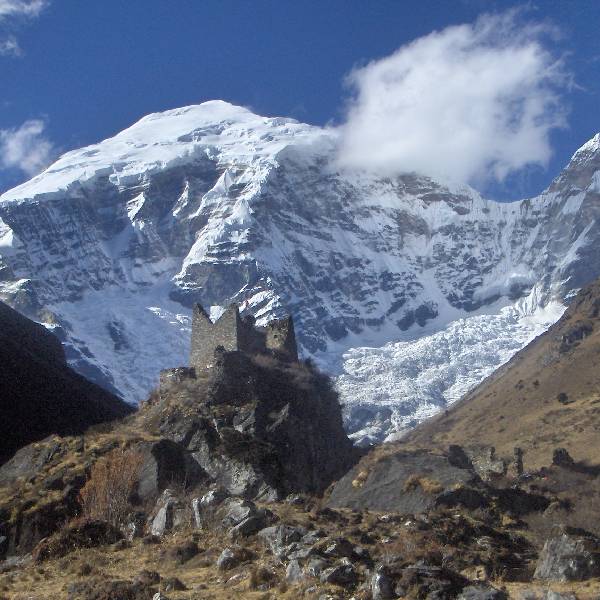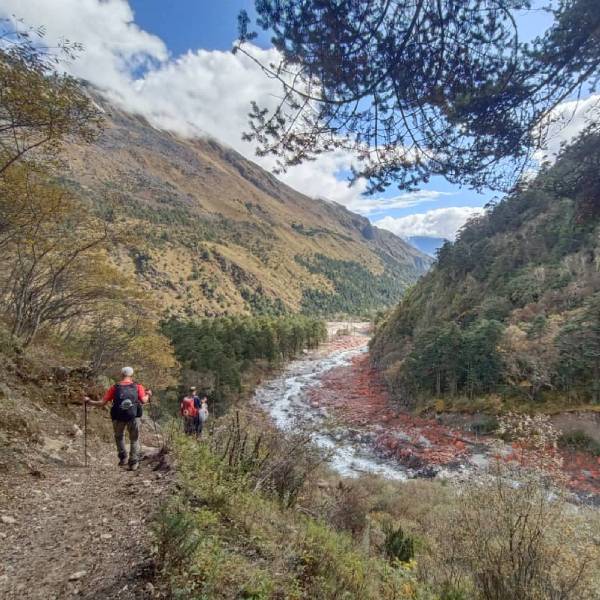The trek continues with a gradual ascent alongside the Paro River, winding through dense coniferous and rhododendron forests. The trail narrows as it meanders through the terrain, with gentle ups and downs following the natural drainage patterns. As you climb higher, the environment becomes more intimate, surrounded closely by nature’s embrace.
Your campsite is set in a peaceful meadow, complete with stone shelters built for trekkers. Enveloped by coniferous and birch trees, this tranquil spot offers a restful atmosphere. On clear days, you’ll be treated to stunning views of Mount Jomolhari, enhancing the magic of this Bhutanese trekking journey.
